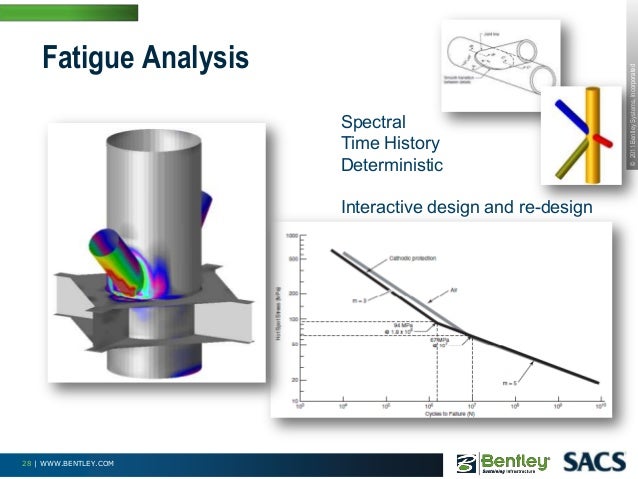Offshore Structure Fatigue Analysis Design Sacs Manual
Fatigue analysis of offshore wind turbines (OWT) support structures could be a costly process, particularly for those having complex geometries and connections such as jacket-type support structures. This paper presents the study on the applicability of the spectral fatigue analysis method to OWT support structures and the use of the scatter diagram lumping method to accelerate the time-domain fatigue analysis. The spectral fatigue analysis method has long been used in the design of offshore platforms in the offshore oil and gas industry.

Offshore Structure Fatigue Analysis Design Sacs Manual Pdf

1989 honda civic lx service manual. The applicability of this method to the monopile foundation of OWT was studied in the past with some success. However, few studies have been done for OWTs supported by more complex substructures such as jackets.
This paper presents the results of a recent study in which systematic benchmark analyses are carried out to evaluate the applicability of the spectral fatigue analysis to OWT support structures. As part of a broader effort to evaluate alternative methods to improve the efficiency of fatigue analysis for OWT support structures, the paper also presents the verification of using various lumping schemes for the three-dimensional scatter diagram to accelerate fatigue analysis in the time domain. A monopile and a jacket, each of which carries the NREL 5-MW Reference Wind Turbine, are selected for the benchmark study.
The equivalent structural model representing the jacket in the fully-coupled aero-hydro-servo- elastic analysis using the NREL FAST program is derived based on the procedure verified through the IEA OC4 project. Load mapping procedures in both the frequency domain and the time domain are developed to allow the time series of global loads calculated using the NREL FAST program to be passed on to the detailed model of the support structure. The spectral fatigue analysis method is adapted from API RP 2A, while the benchmark results are calculated using the time-domain fatigue analysis method. The application of two different scatter diagram lumping schemes to the monopile and the jacket-supported OWTs is evaluated through the comparison with reference solutions obtained using the full scatter diagram. Significant discrepancies are observed between the spectral fatigue analysis results and the benchmark results from the time-domain fatigue analysis.
The verification of scatter diagram lumping schemes indicates that the recommended method is effective and can be applied to significantly reduce the cost of performing the timedomain fatigue analysis for OWT support structures, in particular those with complex configurations.
Top Articles
- ✔ Autocad Lab Manual
- ✔ 2015 Bmw Harmon Kardon Radio Manual
- ✔ Ib English Hl 2017 Guide
- ✔ Signal Master Sml8 Manual
- ✔ 2010 Dodge Journey Rt Manual
- ✔ Detroit Diesel 6v92 Manual
- ✔ Chrysler Stratus Workshop Manual
- ✔ 2016 Expedition Shop Manual
- ✔ Answer Key Arriba Student Activities Manual
- ✔ Jcb 180 Skid Steer Manual
- ✔ Cold War Begins Study Guide Answers
- ✔ Massey Ferguson 8120 Tractor Shop Manual
- ✔ Solution Manual For Operating System Concepts
- ✔ 2018 Ford Focus Parts Manual
- ✔ White Spectrum Metal Detector Manual
- ✔ Cpcs Study Guide 2017
- ✔ E320 Cdi Repair Manual
- ✔ Samsung User Manual Tv
- ✔ Physics Gravitation Study Guide Answers
- ✔ Fishes And Amphibians Study Guide
- ✔ 2015 Bass Tracker Owners Manual
- ✔ Spanish 2 Final Exam Study Guide Grammar
- ✔ Fundamentals Of Structural Stability Torrent Solution Manual
- ✔ Bar Staff Operation Manuals